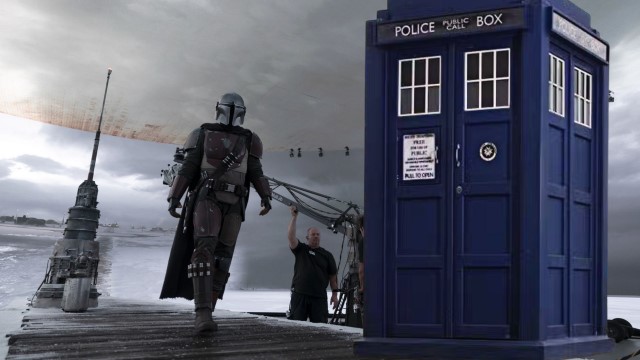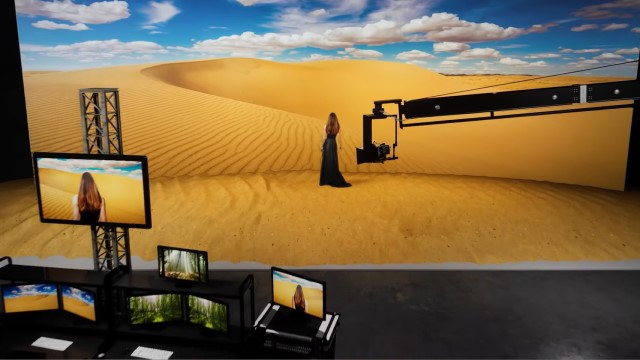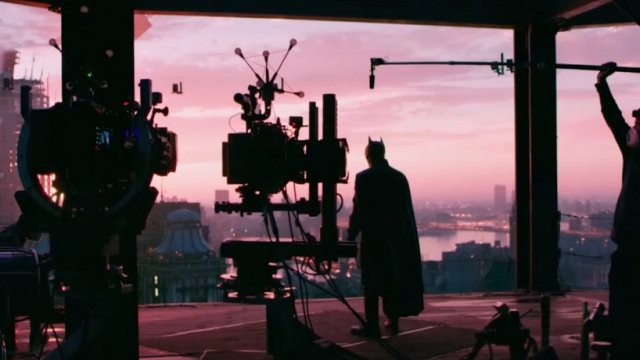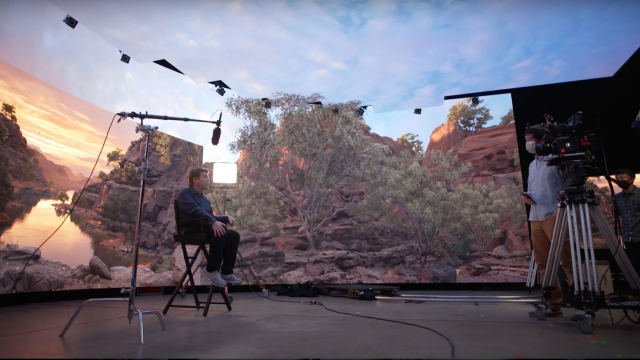The past few years have seen virtual sets like those used by Star Wars’ The Mandalorian revolutionise studio filming. Could Doctor Who Series Fourteen be the next to enter this brave new world?

As we prepare to say goodbye to the Thirteenth Doctor next month, Doctor Who Series Fourteen seems to draw closer with even greater speed. But despite some reports suggesting it could begin filming as early as November, we still have precious little detail. We have our new Doctor in the form of Ncuti Gatwa, and our new showrunner in Russell T Davies. But we don’t know who the companion will be, who will be playing them, or even how many companions the Fourteenth Doctor will have. Nor do we know any of the writers or directors beyond the 60th Anniversary.
We can safely assume a lot of the filming of Doctor Who Series Fourteen will take place at Wolf Studios Wales, the state of the art studio complex that’s home to new co-production partners Bad Wolf. But what form will that filming take? Could we perhaps see the Doctor enter the brave new world of virtual sets?
Back in 2019, just a couple of months before Jodie Whittaker’s second series of Doctor Who began, The Mandalorian changed everything the world thought was possible on a TV budget. The Star Wars series was a central part of the launch of the Disney+ streaming service and jaws dropped among fans and critics alike at how visually stunning it was. And The Mandalorian’s secret weapon was a special set known as ‘the Volume.’
Technically called ‘Stagecraft,’ the set has been a game changer. Devised and built by long time Star Wars FX geniuses Industrial Light and Magic, it’s centred around a 20 foot tall, 75 foot wide, horseshoe-shaped LED screen. Covering 270 degrees out of a circle’s 360, it creates an almost completely immersive environment for the actors to work in. Combined with practical set dressing and props in the foreground, it gives the actors an almost totally immersive world to perform in, a million miles away from the familiar green screen.
Sony, the majority stakeholder of Doctor Who Series Fourteen makers Bad Wolf, have their own virtual set technology

The Volume is much more than just a fancy backdrop, though. What makes it a quantum leap beyond anything that’s come before is that it can be locked to the movements of the camera. If you want to pan around an actor, the image on the LED screen behind them will move in perfect concert with it, showing the walls or horizon moving just as they would in the real world. Teamed with ever-greater sophistication in real time CGI, it also increases the scope for improvisation and for actors to understand the CG worlds they’re interacting with.
Could the Cardiff team use Stagecraft when it returns for the 60th Anniversary and Doctor Who Series Fourteen? Well, the answer is yes and no. Stagecraft is owned exclusively by ILM and, as you might expect, is used almost entirely by properties within the Disney family, like Star Wars and Marvel. However other studios have begun to catch up and launch their own rival versions, such as Sony’s new ZRD-2 Crystal LED wall system. And Sony, of course, is the corporate parent of Bad Wolf, the new home of Doctor Who…
While there’s been no word that Wolf Studios Wales will be home to one of Sony’s new virtual sets, it seems like a perfect fit for Doctor Who Series Fourteen. One of Sony’s promotional videos for the new system even describes it as “video production beyond space and time!” For a show that every week dances between alien worlds, the present day, history and all over the Earth, what could be better than a studio set that can bring cast and crew from one to the other faster than a TARDIS?
The Sony system is also modular, meaning you can fit different panels together to suit the height or width or angle that best suits your scene. Most of the demonstrations so far have used either flat walls or reasonably gentle angles. In theory, though, with enough panels you could build a horseshoe that you could shoot inside of, as with the Disney+ shows. And with the huge height and crystal clear detail of the ZRD-2 screens, there’s huge scope to step into the petrified forests of Skaro, the back streets of Victorian London and the steps of ancient Rome – all without ever leaving Cardiff.
Anywhere in space and time, virtual sets might bring the Doctor there as easily as a TARDIS

One downside, however, is that the system is still fantastically expensive, so much so that no price tag seems to be quoted anywhere for it beyond “If you have to ask…” But even with that, there are two factors in Doctor Who Series Fourteen’s favour. First is that, with Sony now the principle shareholder in Bad Wolf, it makes sense for them to equip Bad Wolf Studios to show off their new technology to the best effect.
Secondly, Bad Wolf Studios won’t be home to just Doctor Who. While Doctor Who stands out at BBC Studios as one of their signature science fiction genre series, Bad Wolf have made science fiction and fantasy one of their specialities. Over the past few years they’ve been responsible for hits like His Dark Materials for the BBC and A Discovery of Witches for Sky. That’s likely to continue in the future, with more genre shows sure to follow. So the cost of this virtual set can probably be spread across the budgets of multiple productions.
This type of technology can never completely substitute for location filming, of course; sometimes you’ll want to show off your characters in impressive wide-angled shots. And unlike some shows, the Doctor doesn’t tend to wear a CGI-friendly bucket on their head. Even when you’re not bringing your actors with you, second units may still be called upon to build a library of footage to project onto those in-studio screens later.
But virtual sets do dramatically cut down on the time and expense that needs to be devoted to such filming. And in a world where international travel and production is still (at least a little bit) more difficult than it was before, that must be an attractive option. And for Russell T Davies, who has previously complained about the “ruiners” of location spies reporting every word of online, relying less on filming on the streets of Britain might have its own appeal.
Doctor Who Series Fourteen could even feature a virtual TARDIS set… but maybe that would be going too far

Meanwhile, it would even be possible to create the TARDIS‘ wildest and most impressive console room ever for Doctor Who Series Fourteen, simply by placing a physical console (and hat stand, surely) between Sony screens. But perhaps that would be a step too far. After all, who could deny Ncuti Gatwa and every passing guest star the traditional joy of exploring the detailed standing set between filming scenes.
What do you make of the possibility of using Mandalorian-style techniques to create otherworldly vistas and historical locations in Doctor Who Series Fourteen? Do you think it would open up a whole new universe of possibilities, and leave the show looking better than ever? Or would you rather stick to good old fashioned set building and location filming?
To help you decide, why not check out Sony’s official promotional videos showing their sets at work.

The Pandorica Opens scarf – order now from the Lovarzi shop!








Leave a Reply